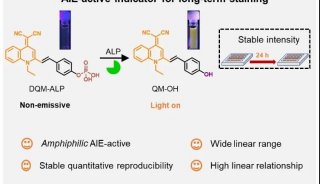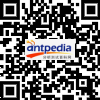新技术:In-Cell Western Assay
In-Cell Western Assay
Complete Sample Protocol Detailing the Seeding
Stimulation, and Detection of the HeLa Cellular
Response to Epidermal Growth Factor
I. Required Reagents
Odyssey® Reagents
IRDye™ 800CW-labeled secondary antibodies (Rockland Immunochemicals, Inc.)
Alexa Fluor® 680-labeled secondary antibodies (Molecular Probes, Inc.)
Odyssey® Blocking Buffer (927-40000)
Additional Reagents
1X PBS wash buffer
Tissue culture reagents (serum, D-MEM, trypsin, 1X PBS)
20% Tween®-20
Epidermal Growth Factor (Upstate Group Inc., 01-107)
37% formaldehyde
10% Triton® X-100
Nunc™ 96 Microwell™ Plate (Nunc Part Number 167008)
Primary antibodies
Special Note: (1) long passage HeLa cells are not suitable for the assay because of high basal level phosphorylation of ERK. As a result, ordering a new sample of this cell line from ATCC is highly recommended. (2) No starvation is needed or recommended.
II. Sample Protocol
1. | Allow HeLa (ATCC; CCL-2) cell growth in a T75 flask using standard tissue culture procedures until cells reach near confluency (~1.5x107 cells; D-MEM, 10% FBS; Gibco®). |
2. | Remove growth media, wash cells with sterile 1X PBS, and trypsinize cells for displacement. |
3. | Neutralize displaced cells with culture media and clarify by centrifugation. |
4. | Remove supernatant and disrupt the cell pellet manually by hand tapping the collection tube. Avoid use of pipet or vortex during pellet disruption to maintain cell integrity. |
5. | Resuspend cells in 20 ml of complete media and count cells using a hemacytometer. |
6. | Dilute cells with complete media such that 75,000 cells/ml is achieved. |
7. | Manually mix the cell suspension thoroughly. |
8. | Under sterile conditions, dispense 200 µl of the cell suspension per well in a Nunc™ 96 Microwell™ Plate (15,000 cells plated per well). |
9. | Incubate cells and monitor cell density until confluency is achieved with well to well consistency; approximately two-three days. |
10. | Warm serum-free media (D-MEM; Gibco) to 37 °C. Dispense 100 µl of D-MEM per well in the Nunc 96-well microplate. |
11. | Make serial dilutions of EGF in the microplate ranging from 0.2 to 100 ng/ml. Leave the first and second wells without EGF (resting cells as control), as shown in section IV. Experimental Results. |
12. | Remove complete media from plate wells by aspiration or manual displacement. |
13. | Transfer media from the dilution plate into the experimental plate. |
14. | Allow incubation at 37 °C for 7.5 minutes. |
15. | Remove activation or stimulation media manually or by aspiration. Immediately fix cells with 4% formaldehyde in 1X PBS for 20 minutes at room temperature. a. Prepare fresh Fixing Solution as follows: 1X PBS45 ml37% Formaldehyde5 mlb. Using a multi-channel pipettor, add 150 µl of fresh Fixing Solution (room temperature solution, RT). Add the Fixing Solution carefully by pipetting down the sides of the wells to avoid detaching the cells from the well bottom. c. Allow incubation on bench top for 20 minutes at RT with no shaking. |
16. | Wash five times with 1X PBS containing 0.1% Triton X-100 (cell permeabilization) for 5 minutes per wash. a. Prepare Triton Washing Solution as follows: 1X PBS495 ml10% Triton X-1005 mlb. Remove Fixing Solution to an appropriate waste container (contains formaldehyde). c. Using a multi-channel pipettor, add 200 µl of Triton Washing Solution (RT). Make sure to carefully add the solution down the sides of the wells to avoid detaching the cells from the well bottom. d. Allow wash to shake on a rotator for 5 minutes at RT. e. Repeat washing steps 4 more times after removing wash manually. NOTES:
|
17. | Using a multi-channel pipettor, block cells/wells by adding 150 µl of LI-COR Odyssey Blocking Buffer to each well. Add the solution carefully by pipetting down the sides of the wells to avoid detaching the cells. |
18. | Allow blocking for 90 minutes at RT with moderate shaking on a rotator. |
19. | Add the two primary antibodies to a tube containing Odyssey Blocking Buffer. Combine the solutions defined below for ERK target analysis:
a. Mix the primary antibody solution well before addition to wells. b. Remove blocking buffer from the blocking step and add 50 µl of the desired primary antibody or antibodies in Odyssey Blocking Buffer to cover the bottom of each well. c. Make sure to include control wells without primary antibody to serve as a source for background well intensity (see first well in Figure 1). Add 50 µl of Odyssey Blocking Buffer only to control wells. |
20. | Incubate with primary antibody for 2 hours with gentle shaking at RT. NOTES:
|
21. | Wash the plate five times with 1x PBS + 0.1% Tween-20 for 5 minutes at RT with gentle shaking, using a generous amount of buffer. a. Prepare Tween Washing Solution as follows: 1X PBS995 ml20% Tween-205 mlb. Using a multi-channel pipettor, add 200 µl of Tween Washing Solution (RT). Make sure to carefully add the solution down the sides of the wells to avoid detaching the cells from the well bottom. c. Allow wash to shake on a rotator for 5 minutes at RT. d. Repeat washing steps 4 more times. |
22. | Dilute the fluorescently labeled secondary antibody in Odyssey Blocking Buffer as specified below. To lower background, add Tween-20 to the diluted antibody for a final concentration of 0.2%.
|
23. | Mix the antibody solutions well and add 50 µl of the secondary antibody solution to each well. Incubate for 60 minutes with gentle shaking at RT. Protect plate from light during incubation. |
24. | Wash the plate five times with 1x PBS + 0.1% Tween-20 for 5 minutes at RT with gentle shaking, using a generous amount of buffer. a. Using a multi-channel pipettor, add 200 µl of Tween Washing Solution at RT (see step 21). Make sure to carefully add the solution down the sides of the wells to avoid detaching the cells from the well bottom. b. Allow wash to shake on a rotator for 5 minutes at RT. c. Repeat washing steps 4 more times after removing wash manually.
|
25. | After final wash, remove wash solution completely from wells. Turn the plate upside down and tap or blot gently on paper towels to remove traces of wash buffer. For best results, scan plate immediately; plates may also be stored at 4 °C for up to several weeks (protected from light). |
26. | Before plate scanning, clean the bottom plate surface and the Odyssey scanning bed with moist lint free paper to avoid any obstructions during scanning. |
27. | Scan the plate with detection in both the 700 and 800 channels using the Odyssey Infrared Imaging System (700 nm detection for Alexa Fluor 680 antibody and 800 nm detection for IRDye 800CW antibody). Use medium quality, 169 µm resolution, 3.0 mm focus offset, and an intensity setting of 5 for both 700 and 800 nm channels. |
-
科技前沿









